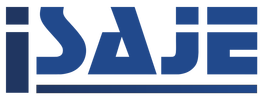Gambling is an important social problem common in the world and rising rapidly among young people. There is yet insufficient data regarding youth in Turkey. This study aims to identify the prevalence of gambling and pathological gambling among the students of a state university and to examine their relation with sensationseeking behaviors. This study has been designed as a cross-sectional research, and the study’s universe constitutes students from the central campus of Mersin University. The sampling universe was calculated using a well-known sampling formula, and 339 students were accessed in the schools through the simple randomsampling method. The research data has been collected using the Socio-Demographic Properties and Gambling Behaviour Form, the South Oaks Gambling Screen, and Zuckerman’s (1996) Sensation-Seeking Scale Form V. In all the conducted analyses, a p ≤ 0.05 has been taken as being statistically meaningful; 49.9% of the students are male and 70.8% are between 18 and 21 years old. Of the students, 25.6% have smoked cigarettes, 24.6% have drunk alcohol, 1.8% have used drugs, 11.5% have been diagnosed with a psychiatric disorder, 52.9% have a relative who has gambled; 41.4% have gambled at least once in their life, with 21.5% in the last month and 15.3% having gambled online. Pathological gambling has been found in 1.2% of the students. Those with a pathological gambling problem only had significantly higher scores in the sub-dimension of boredom susceptibility. As a result, although pathological gambling has low prevalence, the fact that half of the students have experiences with gambling may indicate the problem to be increasing.
To cite this article: Köksoy Vayısoğlu, S., Öncü, E., & Güven, Y. (2019). The frequency of gambling among university students and its relationships to their sensation-seeking behaviors. Addicta: The Turkish Journal on Addictions, 6, 69–90. http://dx.doi.org/10.15805/addicta.2019.6.1.0041

.png)


.png)
.png)